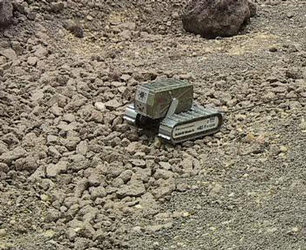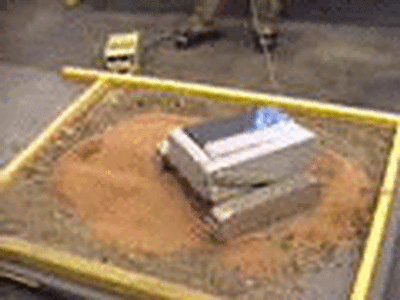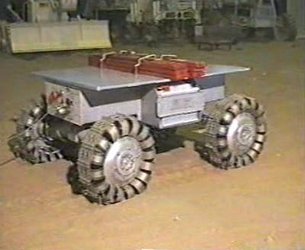Mobility Systems
Mobility Systems are robots aimed at transporting over variable distance payload. In the context of planetary applications the following classes of Mobility Systems can be used:
- Rovers
- Hoppers
- Aerobots
- Subsurface robots
- Underwater robots
Rovers

Robots moving on the surface of the planet: whether relying on wheels, tracks, legs or other exotic locomotion principles (e.g.shape-change, slithering) these rely on firm contact to the surface to propel themselves. The category can be further divided into:
- Micro rovers (< 5 kg in mass): these are typically used to deploy scientific instruments in the immediate surroundings (<10 m) of a lander. Examples of rovers realised by the A&R Section are PROLERO, Nanokhod
- Mini rovers (< 100 kg in mass): these may still be used as lander bound or as completely autonomous systems capable of venturing out for few hundreds of meters. Examples of rovers developed by the A&R Section are MIRO, SOLERO, EXOMADER, Aramies
- Large rovers (> 100 kg in mass): these provide mobility in the range of several kilometres. The A&R Section has developed LRM, and is supporting the EXOMARS rover development
Hoppers
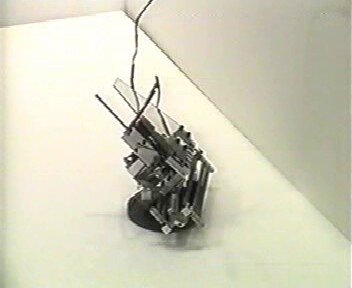
These robots use the principle of hopping to move around. Hopping is particularly attractive in the low gravity conditions such as those experienced in small planets, moons, comets and asteroids. In these conditions with little energy a small hopper can travel long traverses and avoid obstacles many times larger than itself.
There are essentially two types of hoppers:
- the rocket type, which uses chemical or gaseous jets to hop
- the mechanical type, which uses mechanical reaction forces to hop
A well known mechanical hopper is the Soviet Fobos one, which unfortunately failed to hop on the Martian moon Phobos. Another example is the Minerva hopper which was supposed to hop on the Itokoshi asteroid during the JAXA MUSES-C mission. A less known mechanical hopper is the Philae lander at this moment on board the Rosetta spacecraft en route to the Comet 67 P/Churyumov- Gerasimenko.
The A&R Section has not developed any hopper so far, it has however contributed to the development of the CalTech/University of Verona "Frogbot" in order to address the issues of hard landing and close range mobility.
Aerobots
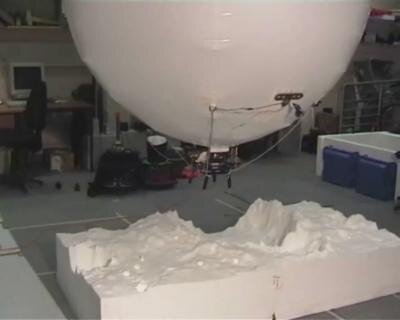
Are robots that move over the surface: in planets endowed with an atmosphere, the static (buoyancy) or dynamic lift generated by the atmosphere makes flying a convenient locomotion means. A further subdivision of the class is made into:
- Lighter than atmosphere (LTA): balloons, blimps, airships and montgolfieres
- Heavier than atmosphere (HTA): gliders, airplanes, gyrocopters and helicopters
What qualifies them as robots is the ability of autonomously navigate the atmosphere relying on sophisticated navigation and aerobot localisation means, the A&R section has developed such means in the “Imaging and Localisation Package for Planetary Aerobot” activities.
Subsurface robots
Are robot that move under the surface of a planet. Subsoil investigation is a needed feature of planetary exploration. While geochemistry studies the composition and morphology of soil and exobiology searches for traces of extinct or extant life, they both require analysis of soil samples unaffected by surface weathering processes. This requires either the analysis instruments are brought into the soil or that soil samples are extracted from the subsurface. Subsurface robots provide these abilities. This class of robots may be divided in two main categories:
- Robotised drills: only a sampling/instrumented head is propelled into the soil. the head maintains a rigid mechanical connection with the part of the drill remaining on the surface. The A&R Section has developed a prototype of compact robotised drill in he frame of the “Micro-robots for Scientific Applications II” activity.
- Robotic moles: the complete robot buries itself into the soil maintaining at most a tether connection to the surface. The A&R Section has developed a prototype of such device in the “Guided Mole Development” activity.
Underwater robots
Obviously from the name, these robots can move in water. On Earth there are quite some examples of operational and research robots who are able to do that for offshore engineering work, exploration and military uses. In space the use of such robots has only be advocated for a mission to Europa. It has been speculated that the Jovian moon may have a vast liquid ocean beneath a crust of ice several kilometers thick. Several parties have proposed a robotic system capable to penetrate the thick crust and to swim in the ocean. The A&R section has not yet devoted any effort to such type of robots.




